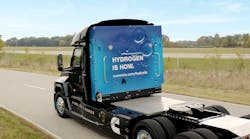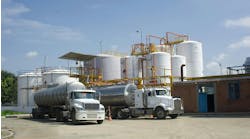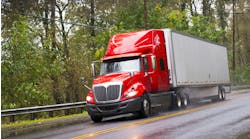One of the things that came out of our most recent Guidance Report, Making Sense of Heavy-Duty Hydrogen Fuel Cell Tractors, was that hydrogen comes in many colors.
Let me explain that and let me add that there is no consensus on the colors of hydrogen. Hydrogen comes from a number of sources and is produced via several different methods including electrolysis of water, using nuclear power or using grid electricity; it is also produced as a byproduct of industrial processes, by the thermal splitting of methane, from natural gas, or it can be extracted from fossil fuel. The colors include green, pink/purple/red, yellow, white, turquoise, black/gray, blue and brown.
With green hydrogen, zero carbon emissions are produced. It is in essence the gold standard of hydrogen in the clean energy sector. (See what I did there to continue the color metaphor?)
And while ideally all hydrogen produced and used in hydrogen fuel cells should be green hydrogen, the reality is that if hydrogen fuel cell use is going to scale, we need to take a portfolio approach to sourcing the hydrogen. There just is not enough green hydrogen available today. So, we need to look at each energy path to hydrogen and recognize that each comes with its own set of challenges and opportunities with respect to being environmentally responsible, but also available now and in the short term.
Given that many nations, states, provinces, and cities have set net zero emission goals, all these paths — or colors — are going to be needed to reach targeted emissions goals sooner rather than later.
In our report, we liken these colors of hydrogen to a horse race with horses of all the colors (think the silks of the jockeys) at the starting gate. Ultimately there will only be one first-place winner, but all the horses will cross the finish line. Folks can bet on the race can win off combinations of horses. Think in terms of exactas and trifectas.
While in the end we want green hydrogen to “win,” it could take a long time before enough green hydrogen is available. In the U.S. today most hydrogen falls into the gray category and comes from natural gas.
But if we are going to get to net-zero emissions we must start somewhere. And using hydrogen from various sources for fuel cell trucks is a good idea as we work toward that new zero-emissions future.
The journey has to start with the first step, and in the case of hydrogen, we have a lot of paths for our first step.





